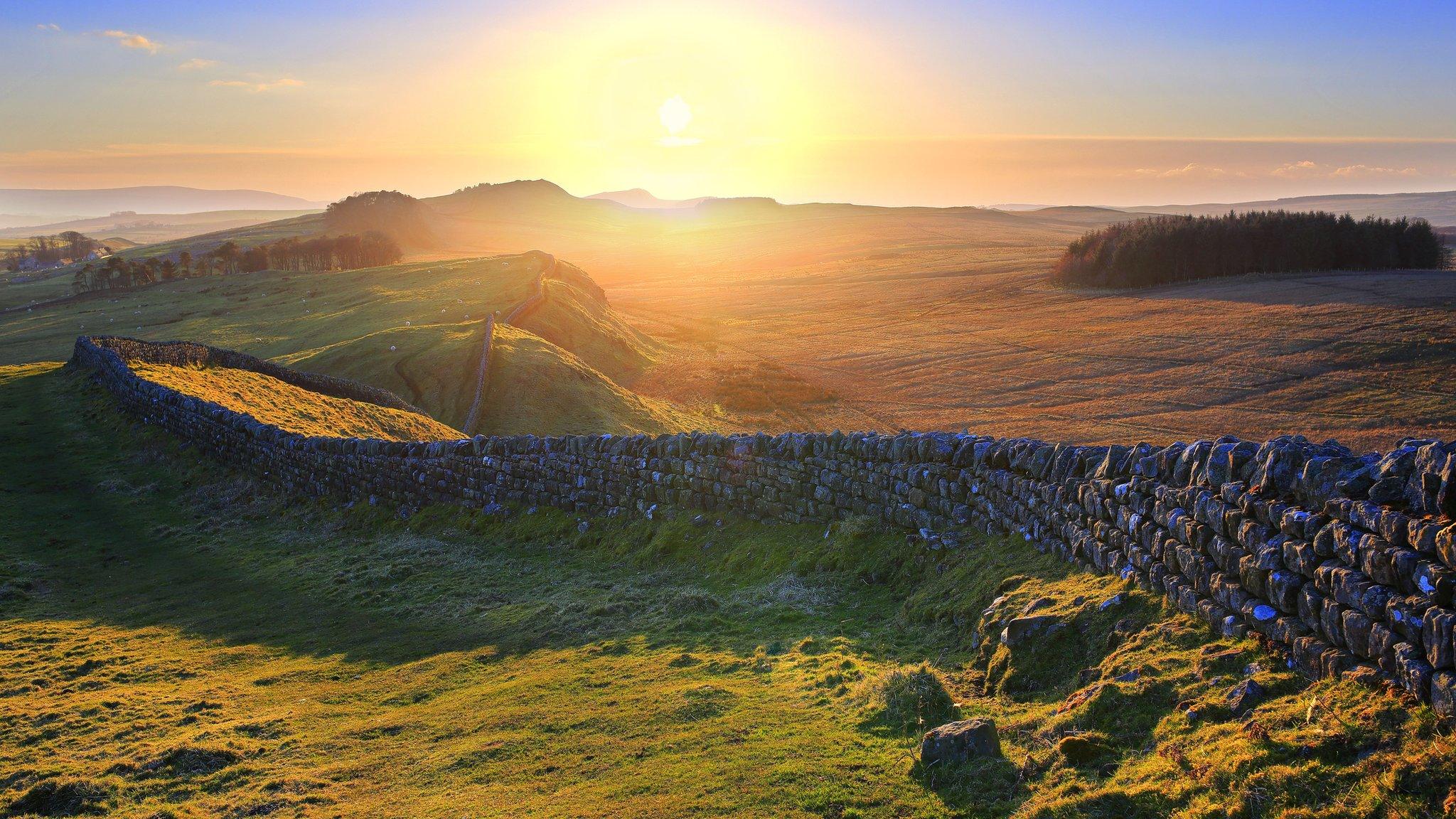Hadrian's Wall 2nd Century souvenir on show for anniversary
- Published
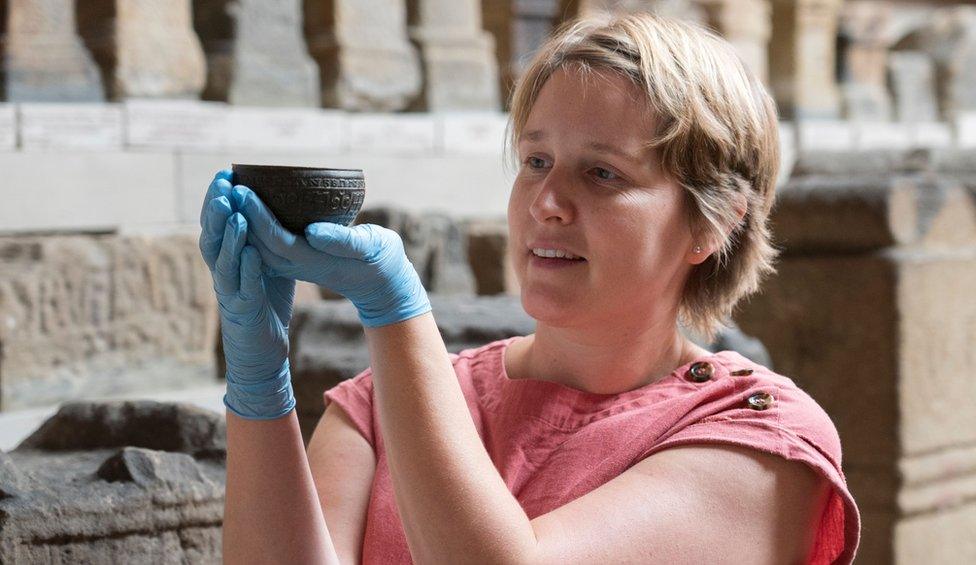
Curator Dr Frances McIntosh with the specially commissioned Rudge Cup, one of Hadrian’s Wall’s earliest souvenirs
One of the earliest-known souvenirs from Hadrian's Wall is on display as part of its 1,900th anniversary.
The Rudge Cup is thought to have been commissioned for a high-ranking soldier or civil official stationed there and was made in about AD130.
The small bronze bowl features an illustration of the wall, and has the names of its forts inscribed on it.
The relic forms part of an exhibition in Northumberland to commemorate the wall's construction in AD122.
The 73-mile (118km) structure spans from Tyneside to the Solway Firth, which was the northern boundary of the Roman empire in Britain.
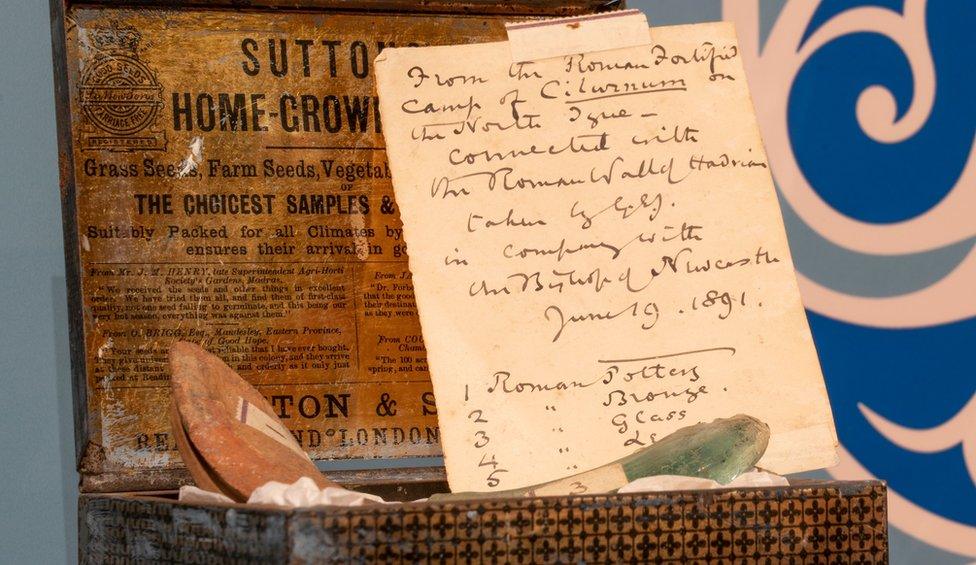
A tin from 1891 which contains glass and ceramic fragments taken from the site features in the collection
The Rudge Cup will sit alongside other souvenirs spanning nearly two millennia at Chesters Roman Fort, near Hexham, Northumberland, until 30 October.
Other highlights include a replica of the Staffordshire Moorlands Pan and the Brougham Patera, on loan from Carlisle's Tullie House Museum and Art Gallery.
Frances McIntosh, English Heritage's curator at Hadrian's Wall, said the idea of collecting objects as a way of keeping memories was extremely old.
"In the Second Century, visitors went to the trouble of commissioning their own souvenirs, like the Rudge Cup," she said.
"We wanted to show how souvenirs have changed and, perhaps more importantly, how they haven't."
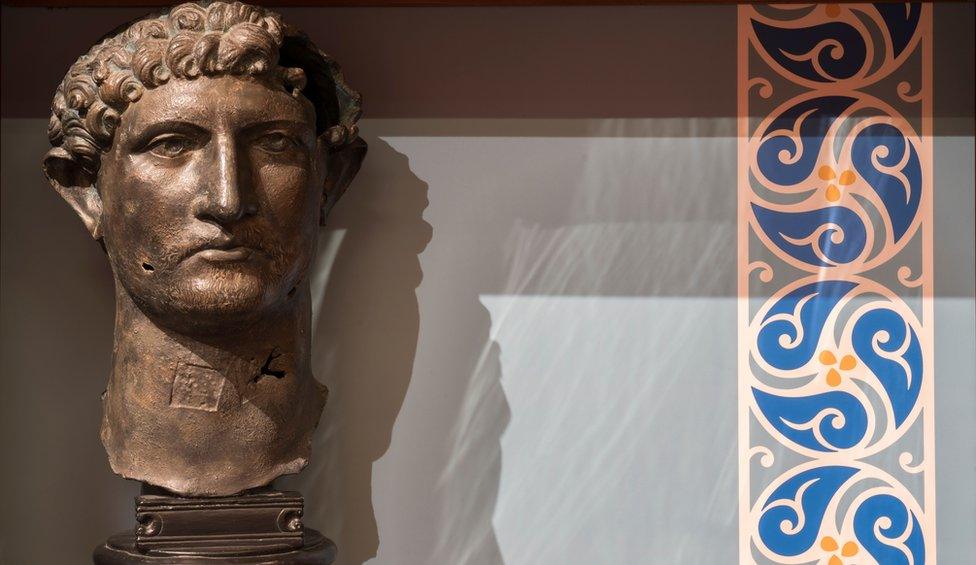
A replica bust of Emperor Hadrian features as part of the display
The collection also features a large replica bust of Hadrian and a piece of a wooden fort at Carlisle.
A tin, recently acquired by English Heritage, filled with scavenged fragments discovered on a visit to Chesters in 1891, according to a handwritten note attached to its lid, is also on display.

Follow BBC North East & Cumbria on Twitter, external, Facebook, external and Instagram, external. Send your story ideas to northeastandcumbria@bbc.co.uk, external.
Related topics
- Published26 May 2022

- Published1 February 2022
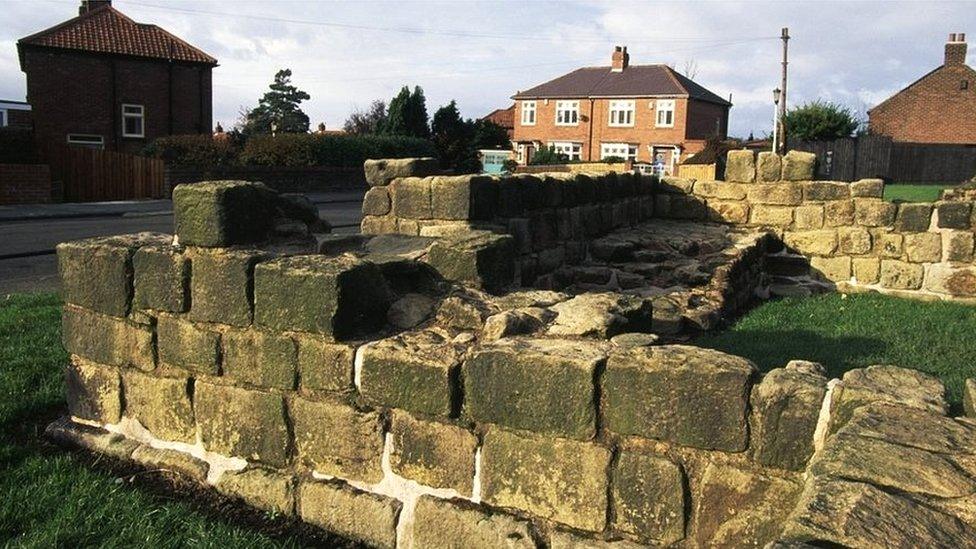
- Published28 December 2017
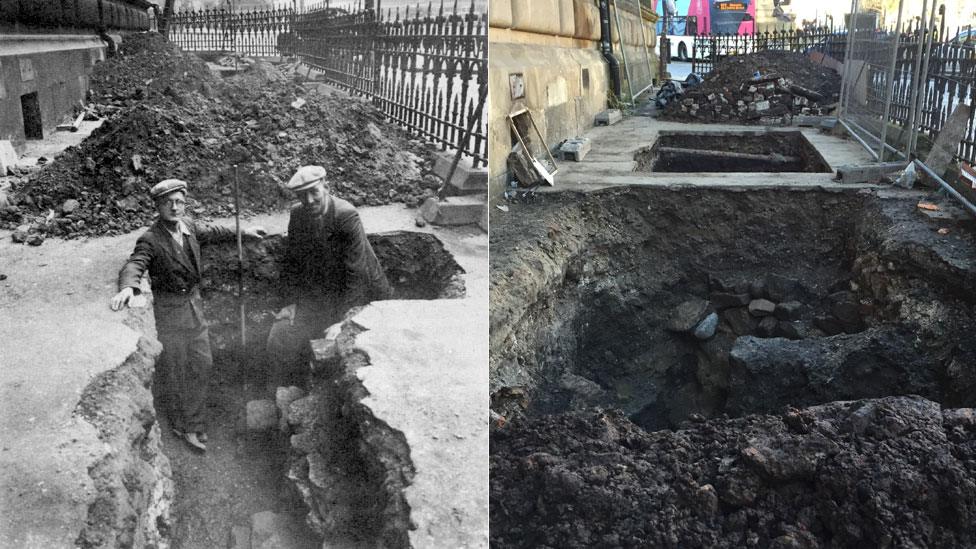
- Published18 December 2021
